Last updated April 21, 2017 at 3:18 pm
Julia Zemiro and Brian Cox were back on our screens with the second episode of Stargazing Live, this time focusing on planets. Here’s what we learnt this time.
It’s probable the Milky Way has collided with a galaxy before
Brian Cox opened the episode with a viewer question about whether the Milky Way has ever collided with another galaxy. And surprisingly the answer was yes.
Around 16,000 light years away from Earth but still within the Milky Way is a cluster of stars called Omega Centauri. This ‘globular cluster’ is a group of 10 million stars all huddled together into a giant bright spot of sky. Brian explained that this could have once been the centre of an old dwarf galaxy, which had collided and merged with our own Milky Way.
Jupiter is way cooler than anyone thought
The largest planet in our solar system is also one of the most interesting. This gas giant is so big 1300 Earths could fit inside it, and it weighs 2.5 times more than all the other planets in the solar system combined. But how it formed and its structure is still a mystery. For example, it has a strong magnetic field but astronomers aren’t sure why – does it have a rocky centre? Or, as Brian thinks, it could be made up of a weird form of hydrogen called metallic hydrogen.
It’s most defining feature is the great red spot, a giant storm that has been raging on the planet for 300 years. The stripes you see as you look at it are giant cloud bands circling the planet, however the cloud shapes at the poles are wildly different with a marbled look to them.
Jupiter has 67 moons, but the four most famous are:
Io – most volcanically active body in the solar system
Europa – has an ice surface which is the smoothest surface on any object in the solar system
Ganymede – huge, the largest moon in the solar system and even larger than Mercury
Callisto – possibly has the oldest surface in the solar system at 4 billion years old
Space Gandalf rocks a hat better than Pharrell
Greg Quicke (aka Space Gandalf) turned up rocking a hat which could not have suited him better. But to some of us it looked a little familiar, and we have to say, Space Gandalf wore it better.
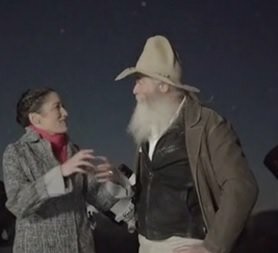
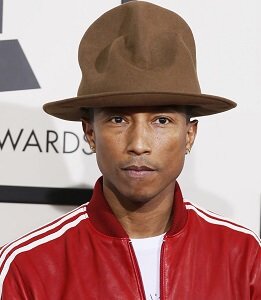
There are people developing ways to divert asteroids away from Earth
Brian Cox dropped a bombshell – it’s essentially luck that Earth hasn’t been hit by a disaster-causing asteroid since the dinosaurs. So with that risk hanging over us there are researchers looking at ways of preventing it occurring.
The show travelled to Scotland to meet Massimiliano Vasile, who is developing ways of protecting Earth from an Earth-bound asteroid. His research group is hoping to use lasers fired at asteroids not to destroy them, but to change their path enough to miss hitting our planet.
The idea is that a laser heats up one side of the asteroid vaporising a small section of the surface. This would shoot out as a gas jet, providing a small amount of thrust in a direction that would bend the path of the asteroid enough to miss Earth. It’s all still theoretical, but tests using asteroid fragments on Earth suggest that this approach may well one day be our saviour.
Dr Lisa Harvey-Smith then demonstrated how astronomers track asteroids and calculated that a potentially hazardous asteroid named Florence would, in fact, miss Earth. Phew!
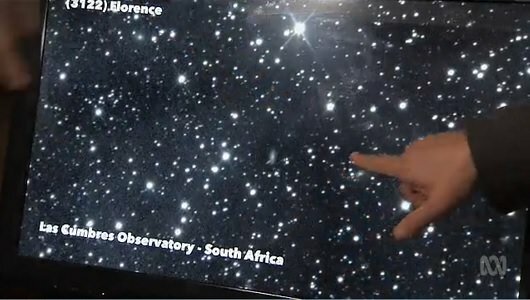
Cassini will crash into Saturn to prevent contamination of other planets
One of the big questions was what we do with all the probes we send out to space. There is a chance that they may be contaminated with bacteria from Earth, so we need to be careful where they end up.
The Cassini probe has been orbiting Saturn since 2004 sending back unbelievable images and information about the ringed planet. However, when it reaches the end of its life in September 2017 researchers were worried that it could contaminate one of Saturn’s moons with hitch hiking bacteria from Earth. To prevent this from happening they will crash Cassini into Saturn, where the satellite will burn up as it enters Saturn’s atmosphere and ensure that no bacteria survive.
Introducing bacteria onto other planets needs to be avoided. Firstly, we don’t want to contaminate other planets with life from Earth where it could run amok or affect any bacteria already living there. Also, if we do detect life on another planet, we’ll be absolutely sure that it was from that planet and not originally from Earth.
Saturn’s rings are wafer thin
Looking at Saturn you may be excused for thinking its rings are solid or at least very thick. But they’re actually very thin – at most 100 metres thick.
The rings are made up of water ice, mostly very small fragments but some chunks up to the size of a house.
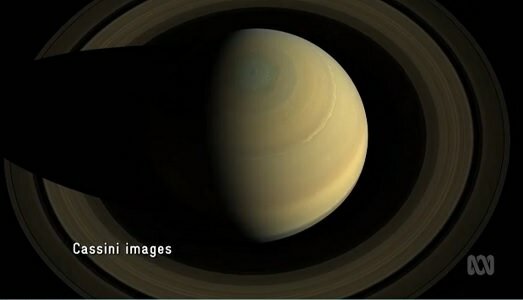
Humans are rubbish for space exploration, so we are developing robots
Humans are terrible for space exploration, affected by radiation, illness, the lack of oxygen and needing to be fed and watered. So to explore other planets, we turn to robots.
Wheeled rovers might be great for exploring a planet the first time, but if we want to one day colonise a planet, some researchers believe we need to send human-shaped robots, such as Valkyrie.
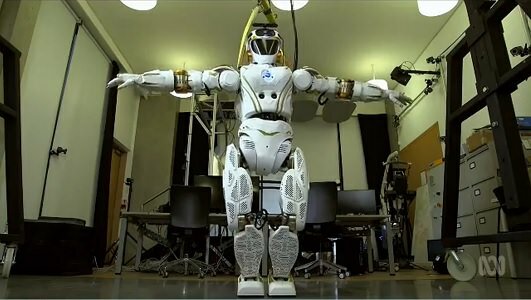
At the moment, Valkyrie is good but not great, with the same ability as a 4 or 5-year-old. But as technology and programming improves, we could be sending robots like Valkyrie ahead of human colonisers to set up habitats. And it’s important that they are human-like – what works for them, works for us. That’s incredibly important if they’re setting up facilities for humans.
6 legged hexapods are freaky cool
One type of exploration robot being developed by the CSIRO was shown off, the spider-like hexapod. They were inspired by ants and cockroaches, and are semi-autonomous, heavy-duty explorers ideal for other planets.
The operator guides the direction of the hexapod, however the robot itself decides how to move. The legs detect and adapt based on the terrain and surface, allowing them to traverse rocky and uneven surfaces without getting themselves into trouble.
In a live demonstration of their capabilities they were also able to go up insane slopes, then stand and balance themselves without falling. This was unfortunate for Brian’s back when he had to lift and hold the board with one on it, as each hexapod is about 10 kg.
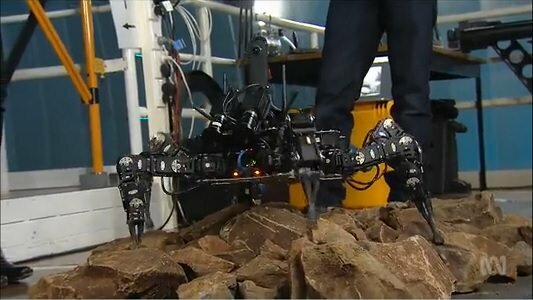
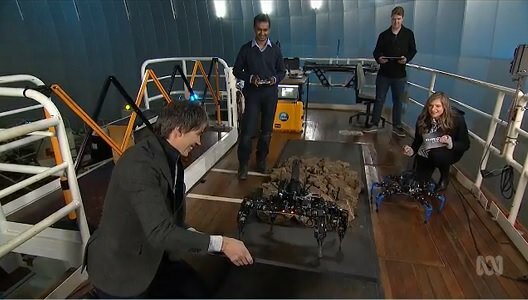
6-legged hexapod! I want one for my birthday, please! #StargazingABC
— Aust Science Channel (@RiAus) April 5, 2017
A new record set for the amount of hair on one screen
Space Gandalf hung out with Gardening Australia’s Costa Georgiadis to watch some planets, and it might have broken new records for the amount of hair on screen at any time.
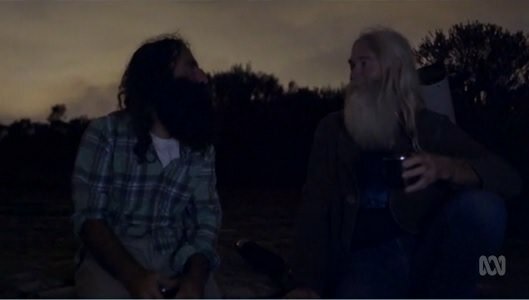
@RiAus Surf often, care less and live more!
— Greg Quicke (@GregQuicke) April 5, 2017
There is only one more episode of Stargazing Live, when the team will be talking about Aliens.
Check out the wrap of the first episode “The Milky Way” HERE, and the third “Aliens” HERE
Images from the ABC
Follow us on Facebook, Twitter and Instagram to get all the latest science.





























































































































































































































































































































































































































































































